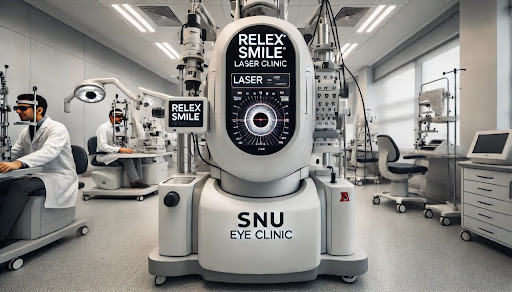In today’s fast-paced world, digital devices have become indispensable. From smartphones and tablets to laptops and televisions, screens dominate both our work and leisure time. While these technologies offer incredible relex smile convenience and connectivity, they also pose significant challenges to our eye health.
Digital eye strain, dry eyes, blurred vision, and even long-term vision problems are becoming increasingly common as screen time escalates globally. But the good news is that with the right habits and awareness, you can protect your vision and maintain healthy eyes—even in the digital age.
This article explores the impact of digital devices on eye health and provides practical tips to help safeguard your vision.

The Impact of Digital Devices on Eye Health
Extended screen use can cause a condition known as Digital Eye Strain (DES) or Computer Vision Syndrome. Symptoms include:
- Eye fatigue and discomfort
- Dry, itchy, or watery eyes
- Blurred or double vision
- Headaches
- Neck and shoulder pain
Why does this happen? Several factors contribute:
- Reduced Blinking: When staring at screens, blink rates drop by up to 60%, causing dry eyes.
- Poor Lighting and Glare: Screen glare and improper lighting force your eyes to work harder.
- Improper Viewing Distances: Holding screens too close or too far strains eye muscles.
- Blue Light Exposure: Screens emit high-energy blue light, which may contribute to retinal stress and disrupt sleep patterns.
- Uncorrected Vision Problems: Undiagnosed refractive errors can worsen digital eye strain.
1. Practice the 20-20-20 Rule
One of the simplest and most effective ways to reduce digital eye strain is to follow the 20-20-20 rule:
Every 20 minutes, look at something 20 feet away for at least 20 seconds.
This exercise relaxes the focusing muscles inside the eye and reduces fatigue. Setting reminders on your phone or computer can help you stay consistent with this habit.
2. Optimize Your Workspace Ergonomics
Proper setup of your digital workspace is critical to minimizing eye strain:
- Screen Position: Place your monitor about an arm’s length (20–24 inches) away, with the top of the screen at or slightly below eye level.
- Adjust Brightness and Contrast: Match the brightness of your screen to the surrounding environment to reduce glare.
- Reduce Glare: Use an anti-glare screen protector, reposition your monitor away from windows, or use curtains/blinds to control natural light.
- Proper Seating: Maintain good posture to prevent neck and shoulder strain, which can indirectly affect eye comfort.
3. Blink Often and Use Artificial Tears
Blinking keeps your eyes moist and comfortable. When focusing on screens, blinking rates decline dramatically, leading to dry eye symptoms.
To counteract this:
- Make a conscious effort to blink fully and frequently.
- Use preservative-free artificial tears to lubricate your eyes if dryness persists.
- Consider using a humidifier in dry environments to maintain moisture levels.
4. Limit Blue Light Exposure
Blue light from screens can contribute to eye strain and interfere with your circadian rhythm, disrupting sleep.
Ways to reduce blue light exposure include:
- Blue Light Filters: Many devices offer built-in “night mode” or “blue light filter” settings that reduce blue light emissions.
- Blue Light Blocking Glasses: Special lenses filter blue light and can be especially helpful if you spend long hours in front of screens.
- Limit Screen Time Before Bed: Avoid screens at least an hour before sleeping to promote better rest.
5. Regular Eye Exams Are Essential
Routine eye exams remain one of the best defenses against digital eye strain and vision problems. An eye doctor can:
- Detect underlying vision issues like nearsightedness, farsightedness, or astigmatism.
- Recommend the appropriate prescription glasses or contact lenses optimized for screen use.
- Identify and manage conditions like dry eye syndrome.
- Provide personalized advice for your digital lifestyle.
Adults should have eye exams every 1–2 years, or more frequently if experiencing symptoms.
6. Use Proper Eyewear for Screen Use
If you already wear glasses or contacts, talk to your eye care professional about:
- Computer Glasses: These have lenses designed to reduce eye strain during prolonged screen use by optimizing focus and filtering glare.
- Anti-Reflective Coatings: They minimize reflections on lenses, improving comfort.
- Prescriptions for Digital Use: Sometimes, a slightly different prescription is recommended for near or intermediate distances typical of computer work.
Even people without existing vision problems may benefit from glasses tailored for screen use.
7. Take Frequent Breaks and Move Your Body
Besides resting your eyes, breaks from screen time should include:
- Stretching your neck, shoulders, and back to prevent muscle tension.
- Changing your focus and position regularly to avoid fatigue.
- Spending time outdoors in natural light, which helps relax your eyes and reset your visual system.
8. Maintain a Healthy Lifestyle for Your Eyes
Healthy eyes depend on overall health. Adopt these habits:
- Eat a Vision-Friendly Diet: Foods rich in vitamins A, C, E, zinc, lutein, and omega-3 fatty acids support eye health. Examples include leafy greens, carrots, citrus fruits, nuts, and fish.
- Stay Hydrated: Proper hydration supports tear production.
- Get Adequate Sleep: Sleep restores eye moisture and repairs strain.
- Avoid Smoking: Smoking increases the risk of cataracts and macular degeneration.
Final Thoughts
Our reliance on digital devices isn’t going away—so protecting your eyes in this new environment is essential. By understanding how screens impact your vision and adopting simple, effective habits, you can prevent discomfort, preserve your sight, and maintain eye health for the long haul.
Make eye care a priority in your digital routine. Your eyes will thank you for it.